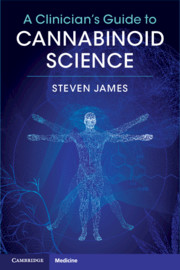Book contents
- A Clinician’s Guide to Cannabinoid Science
- Reviews
- A Clinician’s Guide to Cannabinoid Science
- Copyright page
- Dedication
- Contents
- Preface
- Section 1 An Introduction to Cannabinoid Science
- Chapter 1 An Introduction to the Botany and History of Cannabinoids
- Chapter 2 Δ9-Tetrahydrocannabinol (THC) and Cannabidiol (CBD)
- Chapter 3 The Endocannabinoids
- Chapter 4 Approved Cannabinoid Medicines for Therapeutic Use
- Chapter 5 The Safety of Phytocannabinoids and Cannabinoids in Clinical Practice
- Section 2 Potential Therapeutic Uses of Cannabinoids in Clinical Practice
- Index
- References
Chapter 2 - Δ9-Tetrahydrocannabinol (THC) and Cannabidiol (CBD)
from Section 1 - An Introduction to Cannabinoid Science
Published online by Cambridge University Press: 12 October 2020
- A Clinician’s Guide to Cannabinoid Science
- Reviews
- A Clinician’s Guide to Cannabinoid Science
- Copyright page
- Dedication
- Contents
- Preface
- Section 1 An Introduction to Cannabinoid Science
- Chapter 1 An Introduction to the Botany and History of Cannabinoids
- Chapter 2 Δ9-Tetrahydrocannabinol (THC) and Cannabidiol (CBD)
- Chapter 3 The Endocannabinoids
- Chapter 4 Approved Cannabinoid Medicines for Therapeutic Use
- Chapter 5 The Safety of Phytocannabinoids and Cannabinoids in Clinical Practice
- Section 2 Potential Therapeutic Uses of Cannabinoids in Clinical Practice
- Index
- References
Summary
Cannabis sativa is known to contain over 100 phytocannabinoid compounds plus a mixture of other molecules including terpenes and flavonoids. Collectively, well over 500 different compounds are known to naturally occur in C. sativa and very likely many intriguing properties and potential uses of C. sativa still await discovery. Δ9-Tetrahydrocannabinol (THC) and cannabidiol (CBD) are two of the most common cannabinoids present in the plant and considerable scientific attention has been devoted to these common, but very different, cannabinoids.
- Type
- Chapter
- Information
- A Clinician's Guide to Cannabinoid Science , pp. 13 - 26Publisher: Cambridge University PressPrint publication year: 2020
References
- 1
- Cited by



